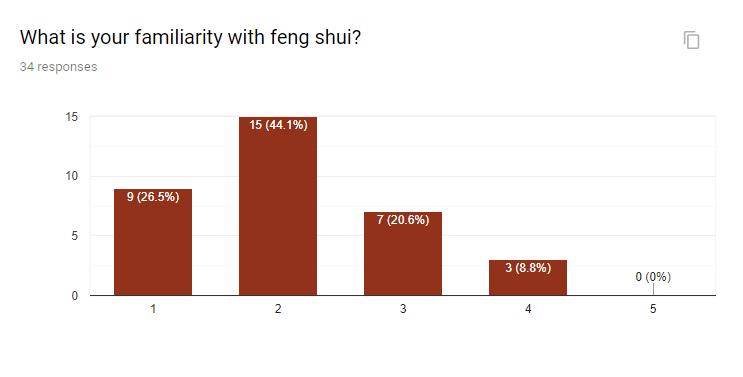Research topic
Different opinions towards Fengshui
The intent of creating this survey for our topic of Fengshui was to test subjects within Truman State University with different cultural, age, and gender backgrounds and to see which categorical separation had the most impact upon the answers of the subjects. This survey gave participants the option to explain their personal experience with Feng Shui in their own words and we compiled the results of this qualitative data to come to our final conclusion.
Graphs

Personal Experience
- Certain color schemes and furniture placement can affect how comfortable a room feels, or how well it enhances your ability to perform within that environment.
- I arrange my room in a manner of being in line with receiving positive qi. I believe that the qi can directly effect daily lives.
- I have never tried it, but I know generally what it means. I do not know if it would help me, but maybe I ought to try. I need all the help I can get with.
- My mom likes to keep a little bit of it in mind when decorating the house, but not majorly.
- When my dad wanted to build a house, he used feng shui first to choose a good place.
- My dad set up our house in a place which is chose by the fengshui master.





